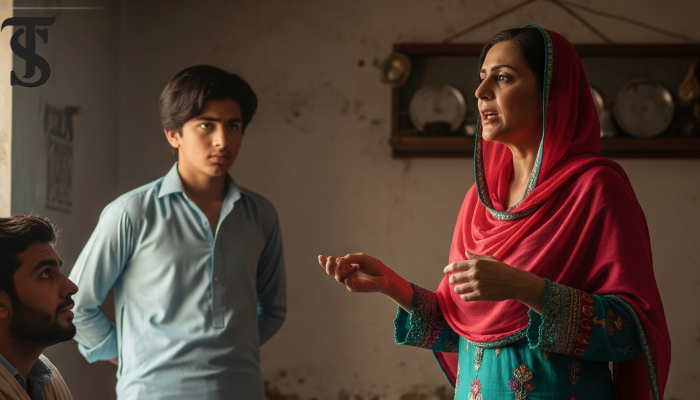Prayer vs. Parity: A Concealed Act of Gender Disparity

- Gender Disparity in Mosques – Women in Pakistan face exclusion from mosques due to cultural barriers, inadequate prayer spaces, and lack of representation in religious administration.
- Need for Mosque Reform – Revitalizing mosques as community centers, investing in women's prayer areas, and integrating modern education can promote inclusivity and gender parity.
- Top-Down and Public Involvement – Government collaboration with religious institutions, policy reforms, and public awareness campaigns are essential to fostering a gender-inclusive mosque environment.
As Pakistan struggles to battle against the drastic spiraling of bigoted remarks, disparities, and violence against women, it has to address the implicit gender discrepancies as well: a web of hidden gender disparities in spiritual parameters. As women are the backbone of any country’s cultural, societal, and spiritual fabric, promoting economic equality and social parity and eliminating vile stereotypes demands their inclusivity.
In Pakistan, the prevalence of gender disparities, in any form, is an incontrovertible reality, and the elimination of the ‘mosque gender gap’ is both a necessity and a fundamental right. Nonetheless, the issue of praying in public due to the ‘lack of space’ in mosques and the absence of women from religious administrative positions is mind-boggling. To fix this, we must address such disparities with gender-sensitive governance, raise awareness, and drive inspiration from other countries’ success in eradicating this societal conundrum.
Chronically, the country’s vicious interplay of religion and politics, particularly in the 1980s, has caused both of these sacred concepts to bleed. The strict moral policies for women that were included in the national political agenda during the 1980s granted a free pass for these regressive gender notions to prevail in that ‘favorable’ environment. Meanwhile, the distressed voices that were unheard at first started to grasp firmly in the sociopolitical battlefields with the efforts of valiant figures such as Asma Jahangir, Hina Jilani, and so on. Still, the distressed voices that consistently echoed ‘faith vs. culture’ had seemingly lost their way.
Consequently, Pakistan still faces a long and exhaustive battle in combating such gaps and an overall retrogressive and conservative interpretation of religion for women. In Pakistan, culturally induced Islamic notions have altered the sacred idea of how mosques should be seen, especially for women. Mosques, in ancient times, used to be community centers where people would pray, learn knowledge, discuss politics, meet, conduct trades, resolve disputes, and play, and everyone would be just warmly welcomed. For instance, unlike the culture in South Asia, mosques in Saudi Arabia, particularly Masjid-e-Nabawi, are used as an Islamic community center. People living in Gulf countries, on visiting South Asia, experience a cultural shock that is beyond human comprehension. The challenges faced by women in mosques that even have separate sections are often underreported as they compromise on the inferior spaces allocated to them.
These cultural shocks are fanned by various reasons that include inadequate legislative attention, relative paucity of civic & religious education, politicization of religious beliefs, and a lack of women in managerial positions. The existing constitutional provisions on disparities and fundamental rights have become weakened over time after failed integration and enforcement. Not only that, the political use of religion in achieving other malicious purposes has undermined sensitive misinterpreted Islamic issues.
There is a dire need to recontextualize certain sociological perspectives on contemporary religious & cultural issues.
This decline in the multiuse of mosques in Pakistan is caused by the lack of sufficient funding for Islamic & community engagement practices, women’s prayer areas, long-term policies to curb gender disparities, and above all, a sharp rise in extremism and security threats. This deterioration has resulted in disastrous fallout. The neglect of women’s prayer spaces and an overall deterioration of the status of mosques should compel us to reflect on how much South Asians have been missing out. Thus, this criminal negligence has led to a growing resentment about the inability to find comfortable public worship places that have fueled more hatred against patriarchal norms, disillusionment regarding the ‘myth’ of gender equality, and general cynicism about societal reformation.
The expulsion of women from mosques is the most evident example of gender disparity, particularly in Pakistan. This oppressive practice urgently demands exhaustive societal reforms, awareness, and sustainable gender policies. Inspiration can be drawn from countries that have mosques as community centers.
In Pakistan, revitalizing mosques as community centers and promoting ‘parities’ over ‘prayers’, requires an exhaustive plan of action. To begin with, this societal conundrum is not only confined to creating an inclusive environment for women; instead, it is a deeply rooted issue that needs a top-down approach. Firstly, provincial governments should take the Auqaf and Religious Affairs Department on board that would regulate Jamia mosques and gradually integrate successful models of community-led mosques. Secondly, the Auqaf Department must invest in women’s prayer spaces in mosques that fall under its jurisdiction. Moreover, the destigmatizing of certain necessities that are seen as colonial tools is a prerequisite to achieving a balance between modern studies and Islamic education. English language, sciences, jobs, and vocational training are all seen as colonial stigmas. However, their importance in the traditional multiuse nature of mosques is undeniable. T
his integration can be done by granting ‘parity’ incentives to mosques and raising awareness via ads, workshops, and seminars. Moreover, colleges and universities should collaborate with provincial Auqaf departments to ensure equal prayer spaces and seminars on contemporary culturally linked religious challenges. The inclusion of women in public prayer spheres in a hostile patriarchal environment is, indeed, a challenge, but a basic yet efficient framework should consist of designated areas, necessary facilities, security cameras, separate entry & exit points, managerial representation, and much more.
In addition, the inequalities faced by women in their designated areas are another issue. During Friday sermons, women in designated areas cannot see the Imam. The absence of necessities, which include quality speakers and small LED screens, results in deep boredom, lack of interest, mistakes in congregational prayers, and discourages women from ever attending sermons.
Furthermore, a top-down approach is important, but the public has to play a vital role in creating an inclusive environment, eliminating regressive notions, and ensuring gender parity in prayer spaces. The public should stop limiting mosques only to congregational prayers, Friday sermons, and religious services.
In conclusion, reviving the traditional concept of mosques as “community centers” is a social, cultural, and economic need that is a ‘sine qua non’ to achieve prayer parity in various spheres of life. For this, Pakistan has to implement an extensive ‘plan of action’ and take inspiration from other countries’ mosque environments. The public has to be interconnected with stakeholders and take their part in fostering an atmosphere sustainable for gender-friendly policies to thrive.
The author is a student of International Relations at the University of the Punjab, Lahore, Pakistan.





